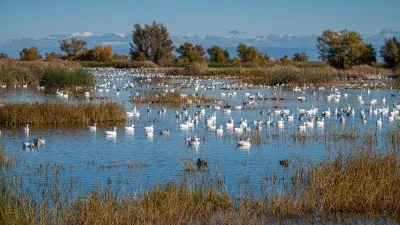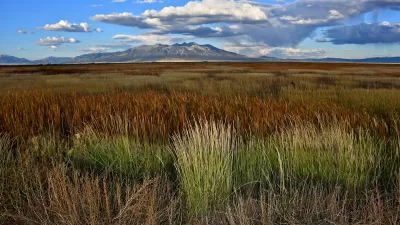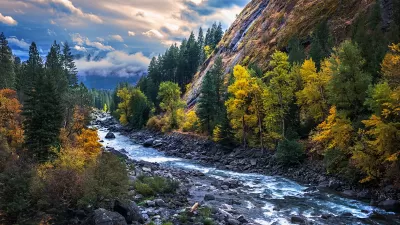In a reversal from Trump-era policy, the Biden administration wants to reinstate protections that prevent the contamination of streams and waterways.

After President Trump rolled back protections for streams and wetlands, "the Biden administration is wading into a decades-long battle over how far federal officials can go to stop contaminants from entering small streams and other wetlands" by calling for "a new set of protections for waterways that provide habitats for wildlife and safe drinking water for millions of Americans," reports Dino Grandoni for the Washington Post.
"At the center of the decades-long legal storm over water protections is the Clean Water Act, which bans pollution in 'waters of the United States' without a permit." The debate over "what constitutes such water" continues as the composition of the Supreme Court changes. "In 2015, the Obama administration expanded federal authority to stop or curtail development that could harm a variety of wetlands, streams and ditches that feed into larger bodies of water protected under the Clean Water Act." After President Trump took office, those controls were rolled back.
In what Grandoni calls a "staggering loss," "more than half of the 221 million acres of wetlands in what would become the contiguous United States have been drained, often for farming" since the 1780s. "With the announcement Wednesday, the Biden administration is kicking off a lengthy rulemaking process. It must first strike down the Trump rule before establishing its own definition for which waterways get federal protection."
FULL STORY: Biden pushes protection for more streams and wetlands, targeting a major Trump rollback

Alabama: Trump Terminates Settlements for Black Communities Harmed By Raw Sewage
Trump deemed the landmark civil rights agreement “illegal DEI and environmental justice policy.”

Study: Maui’s Plan to Convert Vacation Rentals to Long-Term Housing Could Cause Nearly $1 Billion Economic Loss
The plan would reduce visitor accommodation by 25% resulting in 1,900 jobs lost.

Why Should We Subsidize Public Transportation?
Many public transit agencies face financial stress due to rising costs, declining fare revenue, and declining subsidies. Transit advocates must provide a strong business case for increasing public transit funding.

Paris Bike Boom Leads to Steep Drop in Air Pollution
The French city’s air quality has improved dramatically in the past 20 years, coinciding with a growth in cycling.

Why Housing Costs More to Build in California Than in Texas
Hard costs like labor and materials combined with ‘soft’ costs such as permitting make building in the San Francisco Bay Area almost three times as costly as in Texas cities.

San Diego County Sees a Rise in Urban Coyotes
San Diego County experiences a rise in urban coyotes, as sightings become prevalent throughout its urban neighbourhoods and surrounding areas.
Urban Design for Planners 1: Software Tools
This six-course series explores essential urban design concepts using open source software and equips planners with the tools they need to participate fully in the urban design process.
Planning for Universal Design
Learn the tools for implementing Universal Design in planning regulations.
Smith Gee Studio
Alamo Area Metropolitan Planning Organization
City of Santa Clarita
Institute for Housing and Urban Development Studies (IHS)
City of Grandview
Harvard GSD Executive Education
Toledo-Lucas County Plan Commissions
Salt Lake City
NYU Wagner Graduate School of Public Service





























